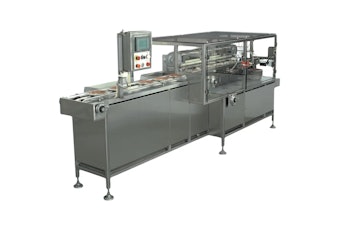1. Unrealistic expectations on both sides. Sometimes CPG companies set a higher level of performance, either to help justify the project internally, or to pad the number under the assumption that the machinery builder will fall short but still meet the actually desired speed. The machinery builder may feel pressure to commit to a performance requirement while suspecting—or knowing—it’s an unreasonable goal. Both sides are now set up for failure and disappointment. Better to have a frank discussion over the real performance requirements and align expectations before the project starts.
2. Poor vendor/application fit. Most machinery building companies are founded or run by engineers, and most engineers have never met a problem they didn’t think they could solve. Vendors that contract to build machines outside their core competence area, or that are simply too overloaded, may end up disappointing their CPG customer.
3. Poor or incomplete project scope. Don’t ever assume that anything can be taken for granted; for example, that the supplier knows your upstream or downstream processes, or that they know the ambient temperature in your factory. Something that may seem obvious to you may be a surprise to the company building your machines.
4. Not adjusting the schedule for changes. Changes do happen, but projects get into hot water when the CPG company expects machinery vendors to accommodate changes without impacting the delivery schedule. An eight-week machinery project that’s already slipping into nine weeks may use a change request to justify that delay. (“We’re going to be a week late anyway, so sure, we’ll take on that request.”) In reality, such a change may turn it into a 12-week project, much to everyone’s surprise.
5. Insufficient expertise on both sides of the table. When specifying equipment, you need to consider absolutely everything, and sometimes the folks who will be operating the machinery know something that engineers on the supplier and customer side won’t know. You need to get them involved early in the process. Here’s a war story from a supplier that shows a good reason why: “We were building a machine for a company that sold processed and packaged spices. Garlic is extraordinarily sticky in a certain humidity range. We didn’t know that! It was not included in the 50 pages of specifications, they just assumed everyone knew. We might have built them a grossly inappropriate machine; luckily, we averted disaster because they happened to mention it at one meeting! Vendors don’t know the eccentricities and idiosyncrasies of your product that you do. The operators know, but the 26-year-old engineer that draws up the specs doesn’t.”
6. Missed launch windows due to different interpretations of lead time. It’s not unusual for the customer and the machinery builder to make completely different assumptions about what “lead time” really means. A machine builder may define lead time as the time from when the order is placed to when that machine is ready for a Factory Acceptance Test (FAT). That could turn into trouble if the customer thinks that lead time extends to when the machine is up and running on the plant floor. Not accounted for are FAT itself, training, modifications, shipping, installation, and start-up. To avoid scheduling problems, make sure everyone agrees what lead time really means.
7. Not adequately preparing for the machine’s actual delivery. You as the customer have work to do after you sign the contract and perform the FAT, and before the truck rolls up with the new machine. Are all the utilities ready? Is there a clear path from the loading dock to the machine’s new location? A recent war story details the preparation the customer did NOT do in advance….leading to a two-day delay while an interior wall of the plant was knocked down. Do your preparation homework.
8. Unanticipated additional container sizes/shapes. A machine designed to handle an oval container will have tooling that’s not suited to handling a round one. Take the time to think through all the possible containers you‘ll be running and communicate that to your equipment vendor up front. If there’s an oddball container that’s throwing a wrench into the machine design process, the vendor needs to know what percent of the time that size will run, so it can be addressed accordingly. Conversely, tell the vendor which container sizes and shapes are expected to account for the bulk of the production volume. That enables them to optimize the equipment, to the extent possible, for those sizes and shapes.
9. Pay attention to the line speed details. For example, avoid over-specifying your speed requirements. Many assume each machine in the line should run 15% faster than the next closest machine to the critical machine on the line. But if your labeler is the fifth machine down from the filler, using this logic will require it to run 2X faster than the filler, which may not be close to reality. Another detail often missed is ergonomics. One manufacturer told us they have factory workers approaching thirty years of seniority, and they wouldn’t have been effective if they didn’t have ergonomically correct height-adjustable tables. Adjusting the equipment, rather than the people (like using a step stool), could lead to fewer injuries and downtime.
10. Don’t count on integration unless you pay for it. It’s a mistake to assume a machine builder will serve as your engineering department and take responsibility for your entire line—unless you explicitly hire them to do so. The machine builder’s job is to build the machine, not to take responsibility for the line.
11. Define what success looks like. When it comes time to validate your purchase, do you know what a successful implementation looks like? Failure is likely if expectations are unrealistic and/or vendor promises are not verified prior to purchase. You can only declare success at the end if you define it, and agree to that definition, in the initial specifications you present to your supplier.
Liked this article? Download the End of Line Playbook here. Download the Primary Playbook here.

























